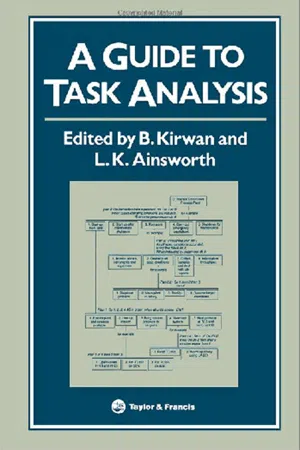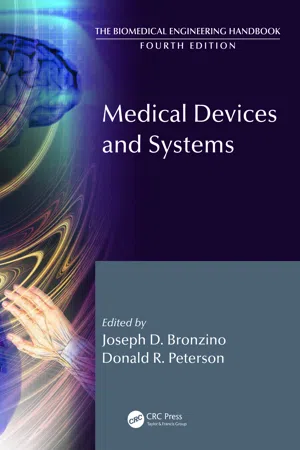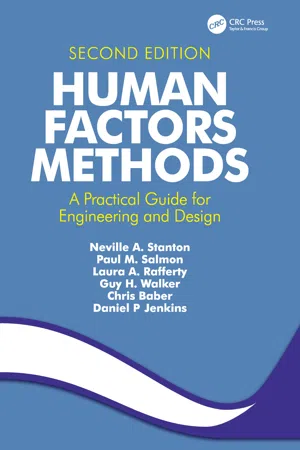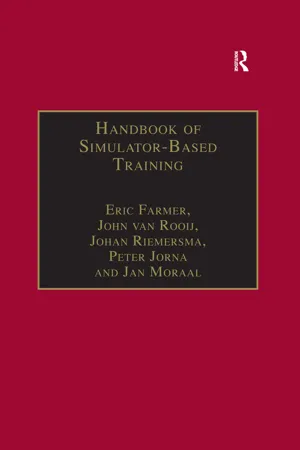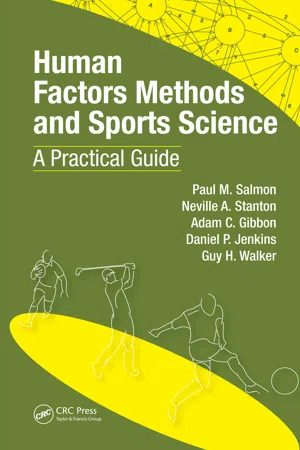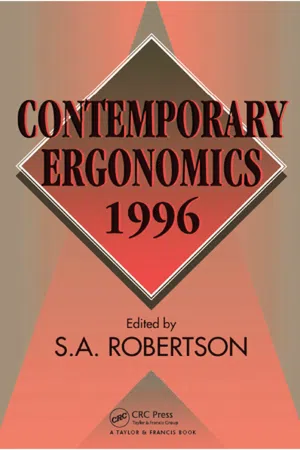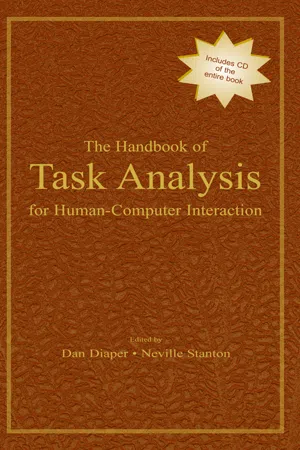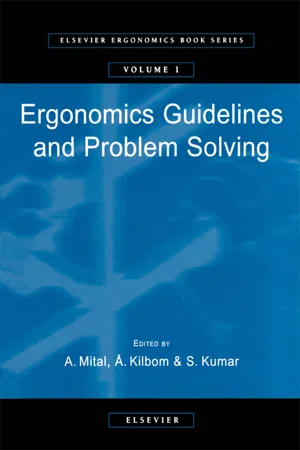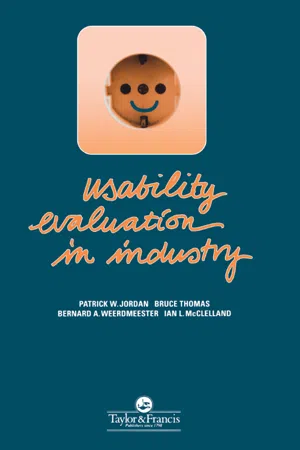Technology & Engineering
Task Analysis
Task analysis is a systematic process used to understand the steps and requirements of a specific task. It involves breaking down a task into smaller, more manageable components to identify the skills, knowledge, and resources needed to complete it effectively. This method is commonly used in technology and engineering to design user-friendly products and efficient processes.
Written by Perlego with AI-assistance
Related key terms
1 of 5
11 Key excerpts on "Task Analysis"
- eBook - PDF
A Guide To Task Analysis
The Task Analysis Working Group
- B Kirwan, L. K. Ainsworth, B Kirwan, L. K. Ainsworth(Authors)
- 1992(Publication Date)
- CRC Press(Publisher)
PART I The Task Analysis process This page intentionally left blank This page intentionally left blank Chapter 1 The Task Analysis process Introduction Task Analysis involves the study of what an operator (or team of operators) is required to do to achieve a system goal. The primary purpose of Task Analysis is to compare the demands of the system on the operator with the capabilities of the operator, and if necessary, to alter those demands, thereby reducing error and achieving successful performance. This process usually involves data collection of the task demands, and representation of those data in such a way that a meaningful comparison can be made between the demands and the operator's capabilities. This allows ' analysis' of the task and, where necessary, the specifi-cation of ways to improve human performance. Sometimes this representation and analysis process may require simulation of the task in order to review more flexibly or dynamically the interactions between the system and the operator under a range of conditions. The analysis of the demands may also involve comparison of the task demands with a database on human performance limita-tions, or a checklist of recommended (ergonomic) ways of designing· tasks and/or interfaces. This process of data collection, representatio n (and/or simula-tion) and analysis is termed the 'Task Analysis process'. To ensure a system is as effective and reliable as possible (i.e. that it is operable and maintainable), the human element must be considered in parallel with the equipment at all stages in the ' system life cycle'. This consideratio n of the human element (i.e. explicitly via the Task Analysis process), should be undertaken as an integral part of the system life cycle, making use of the different Task Analysis techniques at appropriate stages of design or operation. - eBook - PDF
- Joseph D. Bronzino, Donald R. Peterson, Joseph D. Bronzino, Donald R. Peterson(Authors)
- 2018(Publication Date)
- CRC Press(Publisher)
For example, a writing task would be accomplished differently with paper and pencil, a manual typewriter, or a computer with word-processing software. Design : During the design phase, task scenarios, prototypes, and simulations are used to detail and refine the task procedures, task requirements, allocation decisions, and human–machine interface design. Postdevelopment : Analyzing well-defined tasks performed by an operational system provides a detailed description of task procedures and resource requirements that can be used to improve task performance and the system design. For example, Rogers et al. (2001) were able to reveal many sources of errors and design recommendations from their Task Analysis of a consumer blood glucose meter. Suri (2000) used task and user analyses of an existing defibrillator to identify errors and safety concerns, and as a basis for a new design. 33.3.1.2 Engineering Design Decision Considerations The design decisions that the Task Analysis will support have the greatest impact on what type of data are needed. Applications of Task Analysis vary greatly and include decisions that may or may not involve machines. Applications include, but are not limited to those described below. Human–machine-task allocation : Allocation of tasks is a major systems-engineering decision. Task Analysis is used to identify task load and performance requirements and contributes to assessing work-load. Workload assessment provides a basis for assigning task responsibilities to humans and machines such that performance requirements can be satisfied and workload levels are not excessively low or high. These assessments augment qualitative allocation strategies (e.g., Fitts’ lists) in which tasks are assigned on judgments of the relative performance capacities of humans and machines on generic tasks. - eBook - ePub
Human Factors Methods
A Practical Guide for Engineering and Design
- Neville A. Stanton, Paul M. Salmon, Laura A. Rafferty, Guy H. Walker, Chris Baber, Daniel P. Jenkins(Authors)
- 2017(Publication Date)
- CRC Press(Publisher)
3 Task Analysis Methods Whilst data collection techniques are used to collect specific data regarding the activity performed in complex systems, Task Analysis techniques describe and represent the activity performed. Another emphatically used group of HF techniques, Task Analysis techniques are used to understand and represent human and system performance in a particular task or scenario under analysis. Task Analysis involves identifying tasks, collecting task data, analysing the data so that tasks are understood and then producing a documented representation of the analysed tasks (Annett et al., 1971). According to Diaper and Stanton (2004), there are, or at least have been, over 100 Task Analysis techniques described in the literature. Typical Task Analysis techniques are used, in terms of the required human–machine and human–human interactions, to break down tasks or scenarios into component task steps or physical operations. According to Kirwan and Ainsworth (1992), Task Analysis can be defined as the study of what an operator (or team of operators) is required to do (their actions and cognitive processes) in order to achieve system goals. The use of Task Analysis techniques is widespread, with applications in a wide range of domains, including military operations, aviation (Marshall et al., 2003), air traffic control, driving (Walker, Stanton and Young, 2001 a), public technology (Stanton and Stevenage, 1998), product design and nuclear petrochemical domains to name a few. According to Annett (2004), a survey of defence Task Analysis studies demonstrated its use in system procurement, manpower analysis, interface design, operability assessment and training specification. Diaper (2004) suggests that Task Analysis is potentially the most powerful technique available to human–computer interaction (HCI) practitioners, and it has potential application at each stage in the system design and development process - eBook - ePub
Human Factors in Land Use Planning and Urban Design
Methods, Practical Guidance, and Applications
- Nicholas J. Stevens, Paul M. Salmon, Guy H. Walker, Neville A. Stanton(Authors)
- 2018(Publication Date)
- CRC Press(Publisher)
The use of task-analysis techniques is widespread, with applications in a wide range of domains, including military operations, aviation (Stanton et al., 2016), air-traffic control, driving (Walker et al., 2001), public technology (Stanton and Stevenage, 1998), product design, and nuclear petrochemical domains, to name a few. Diaper and Stanton (2004) suggested that Task Analysis is potentially the most powerful technique available to human–computer interaction (HCI) practitioners. Although Stanton (2006) also suggested that Task Analysis is the central method for the design and analysis of system performance, involved in everything from design concept to system development and operation. Stanton also highlighted the role of Task Analysis in task allocation, procedure design, training design, and interface design.A Task Analysis of the task(s) and system under analysis is the next logical step after the data collection process. Specific data are used to conduct a Task Analysis, allowing the task to be described in terms of the individual task steps required, the technology used in completing the task (controls, displays, etc.), and the sequence of the task steps involved. The task description offered by task-analysis techniques is then typically used as the input to further analysis techniques, such as error identification (EI) techniques and process charting techniques. For example, systematic human-error reduction and prediction approach (SHERPA) (Embrey, 1986) and the human-error template (Marshall et al., 2003) are both EI techniques (Chapter 5 ) that are applied to the bottom-level task steps identified in a hierarchical Task Analysis (HTA). In doing so, the task under analysis can be scrutinized to identify potential errors that might occur during the performance of that task.The popularity of task-analysis techniques is a direct function of their usefulness and flexibility. Typically, a Task Analysis of some sort is required in any HF analysis effort, be it usability evaluation, error identification, or performance evaluation. Task-analysis outputs are particularly useful, providing a step-by-step description of the activity under analysis. Moreover, analysts using task-analysis approaches often develop a (required) deep understanding of the activity under analysis. - eBook - ePub
- Eric Farmer, John van Rooij, Johan Riemersma, Peter Jorna(Authors)
- 2017(Publication Date)
- Routledge(Publisher)
skill description is necessary.Task Analysis is supported by a number of specific techniques to collect and organise information and subsequently make judgements or design decisions. The method of Task Analysis provides the user with a 'blueprint' of human involvement in a system, creating a detailed picture of the system from a human perspective. This structured information can then be used to ensure (by design or training) that the system goals and human capabilities and organisation are compatible, so that the system goals will be achieved.Techniques for task description are time-line analysis, flow process charts, critical Task Analysis, operational sequence diagrams, and decision tables (Beevis, 1992):- Time lines show the sequence of operator tasks and provide a basis for analysis of workload and resource estimation.
- Flow process charts depict the sequence of operator and machine activities along a vertical dimension. Each of five types of activity (operation, transportation, inspection, delay, and storage) is graphically depicted by a symbol.
- Critical Task Analysis is a standard technique for detailed analysis of operator tasks that impose high workload or are critical to system safety or the success of the mission.
- Operational sequence diagrams are extensions of flow process charts that provide a graphical representation of the flow of information, decisions and activities in a system.
- Decision tables are tables of conditions and their combinations, and the allowed or optimal actions for each combination of conditions.
Skill Decomposition
Skill decomposition is generally conducted to learn more about the knowledge and skill requirements of a task or set of tasks. This type of information is important for selection and for training analysis and design. Once the Task Analysis is complete, required skill profiles can be derived from the individual tasks identified. This will distinguish the physical and mental activities required to perform the tasks. A reasonable first-level grouping would be at two levels: general requirements and mission-specific requirements. These would require further breakdown until a full understanding of each individual task was obtained. Once the required skills have been identified for all tasks, a criterion for acceptable level of performance for the most demanding tasks requiring the skill can be identified, from which training objectives can be set. This is the level of performance that must be reached by the trainee at the end of training. - eBook - PDF
Human Factors Methods and Sports Science
A Practical Guide
- Paul Salmon, Neville Anthony Stanton, Adam Gibbon, Daniel Jenkins, Guy H. Walker(Authors)
- 2009(Publication Date)
- CRC Press(Publisher)
35 3 Task Analysis Methods INTRODUCTION Methods of collecting, classifying, and interpreting data on human performance in work situations lie at the very heart of Ergonomics and Human Factors (Annett and Stanton, 2000). Accordingly, Task Analysis approaches are the most commonly used and well-known form of Human Factors methods. They are used to collect data about and describe tasks, systems, and devices in terms of the physical and cognitive activities involved during task performance; they focus on “what an operator … is required to do, in terms of actions and/or cognitive processes to achieve a system goal” (Kirwan and Ainsworth, 1992, p. 1). The outputs from Task Analysis methods are used for a variety of purposes, including task and system design and evaluation, interface design, training programme design and evaluation, allocation of functions analysis, error identification and analysis, and procedure design. Their popularity is such that there are over 100 Task Analysis approaches described in the litera-ture (Diaper and Stanton, 2004), and they have been applied in all manner of domains, including the military (e.g., Matthews, Strater, and Endsley, 2004), aviation (e.g., Stanton, Harris, Salmon, Demagalski, Marshall, Young, Dekker, and Waldmann, 2006), driving (e.g., Walker, Stanton, and Young, 2001), healthcare (e.g., Lane, Stanton, and Harrison, 2007), public technology (e.g., Adams and David, 2007; Stanton and Stevenage, 1998), music (e.g., Hodgkinson and Crawshaw, 1985), and sport (Doggart, Keane, Reilly, and Stanhope, 1992). The origins of task analytic approaches go as far back as the early 1900s to the so-called scien-tific management movement of that time. Scientific management methods, advocated by the likes of Frederick Taylor and the Gilbreths, were used to analyse tasks in order to investigate more efficient ways in which to undertake them. - eBook - PDF
- S. A. Robertson, S. Robertson(Authors)
- 1996(Publication Date)
- CRC Press(Publisher)
Task Analysis THE PRACTICAL INTEGRATION OF Task Analysis INTO SYSTEM DEVELOPMENT Roger S Harvey1 and Michael K Goom2 ^(L S ^F I Ministry of Defence Main Building Rm 2230 Whitehall LONDON SW1A 2HB 2Systems Concepts Dept., BAe Dynamics Ltd PO Box 5 Filton BRISTOL BS12 7QW This paper provides a summary of the findings of a two-day workshop, held in September 1995 under the auspices of the UK MOD/Industry MANPRINT Consultative Working Group (a forum for the exchange of information between UK MOD and Industry concerning the use and application of the MANPRINT/Human Factors Integration programme in defence equipment procurement). Some sixty experts in a variety of the disciplines that contribute to system development analysed ten topics concerning Task Analysis and its relationship to the system development processes within defence equipment procurement. Introduction Task Analysis (TA) can be considered to be one of the fundamental methods underpinning the successful application of Human Factors to system design and development. Recognising this, the UK MOD/Industry MANPRINT Consultative Working Group (a forum for the exchange of information between UK MOD and Industry concerning the use and application of the MANPRINT/Human Factors Integration programme in defence equipment procurement) organised a two-day Workshop Task Analysis and MANPRINT. This meeting brought together experts in a variety of the disciplines that contribute to system development in order to discuss and analyse a number of key topics concerning TA and its relationship to the system design and development processes within defence equipment procurement. In order to set the context for the Workshop the design process was taken to mean the whole process of product development and procurement from concept design to equipment disposal. The Workshop aimed to disseminate a shared understanding of what TA can contribute to system design and evolution, - Dan Diaper, Neville Stanton, Dan Diaper, Neville Stanton(Authors)
- 2003(Publication Date)
- CRC Press(Publisher)
At the same time, good design is creative—designers should not be told what to do by task analysts. Good task analyses, despite what some have argued, do not condemn designers to the limitations of previous approaches to implementing operations, but good task analyses are not always easy to conduct. The SGT method endeavours to ensure good practice in Task Analysis, recognizing that Task Analysis is a process of negotiation between analyst and engineer (or client, designer, or user group), not a process of capturing an absolute standard for implementing a set of operations.We believe that there is a currently unrecognized danger of trying too hard to drive the design of systems by user-centered considerations. One risk of focusing too much on user operations is that it may undermine the need to drive design by a clear functional specification of objectives and constraints (see Vicente, 1999, for a similar argument regarding the importance of focusing on the functional status of plant in designing support for operator tasks). The SGT method is explicit about the points at which it is neutral to implementation and the points at which it must lose its neutrality. The key to successful application of the method is the recognition that, regardless of the domain of application, the engineering of the system should drive the design of human-system interactions, not the reverse. Only then will designers take on board a complete assessment of the needs of human users in the specification of complex interactive systems.REFERENCES
Annett, J., & Duncan. K. D. (1967). Task Analysis and training design. Occupational Psychology, 41, 211-221.Annett, J., Duncan, K. D., Stammers R. B., & Gray. M. J. (1971). Task Analysis. London: Her Majesty’s Stationery Office.Benyon, D. (1992). The role of Task Analysis in systems design. Interacting With Computers, 4, 102-123.Diaper, D. (2001). Task Analysis for knowledge descriptions: A requiem for a method. behavior and Information Technology, 20, 199-212.Dillon, A., Sweeney, M., & Maguire, M. (1993). A survey of usability engineering with the European IT industry: Current practice and needs. In J. L. Alty, D. Diaper, & S. Guest (Eds.), People and computers VIII- eBook - ePub
- A. Mital, Å. Kilbom, S. Kumar(Authors)
- 2000(Publication Date)
- Elsevier Science(Publisher)
Fig. 2 shows the principle of a Task Analysis.Task Analysis is followed by task synthesis to create groups of tasks from the analysed task components. These groups of tasks can then be allocated to specific persons or departments. The following criteria can be used to integrate a series of tasks into a job:• Tasks involving similar actions are brought together. • Tasks performed on similar products or groups of products are brought together. • Jobs are created by bringing together various planning or control tasks. • Tasks are brought together with the aim of optimizing the use of tangible assets (e.g. an automatic production plant). • Tailoring jobs (e.g. management jobs or jobs for handicapped persons) to fit specific employees.• Tasks are brought together on a regional basis. In contrast to the procedures discussed above, which see the individual worker as an element in the system or as a production factor, ergonomic and industrial psychological analysis procedures concentrate on the aptitude, the personal requirements and the attitude/behaviour of the individual worker. When the aim of the analysis is to investigate the tasks involved in a job, it is not always possible to separate the results of the analysis from the individual worker whose specific aptitudes inevitably influence the nature of the task and its performance. This point will be reverted to and discussed in greater detail in the next section dealing with the stress–strain concept (cf. Fig. 3 ).Fig. 3 Stress–strain concept.(cf. Rohmert et al., 1975b)The psychological analysis procedures address themselves to four possible definitions of the task in terms of its interaction with the individual worker (Hackman, 1970 ; Wheaton, 1968 ; Graf Hoyos, 1974 ; Frieling, 1975 ; Graf Hoyos and Frieling, 1977 , etc.):1. Task as defined by the type of actions performed (Fine , 1967; Rabideau - eBook - PDF
- Ann M. Bisantz, Catherine M. Burns(Authors)
- 2016(Publication Date)
- CRC Press(Publisher)
Aircraft that have been through trauma (for example, hard land-ings) are pointed out to inspectors by managers so that strategies can be chosen appropriately (e.g., special attention to landing gear and high-load pathways in the aircraft structure). Although many of these social and organizational aspects are Worker Competency Analysis and Beyond n 241 informal, they do exist and are put into the task analyses and the good practices arising from them (e.g., Drury & Watson, 1999). This example has concentrated on the ways in which task can be described (i.e., Task Description), with the TA coverage limited to the final column of Table 9.1. This analysis asks the questions one HFE professional sees as important to under-standing how task demands are matched to human capabilities. Users of TA, and particularly HTA, recognize that TA is the goal with task description only being a means toward that end. The analysis must be useful to the ultimate user of the HFE effort, who typically never sees the task description, only the final product. As a conclusion on TA, we can take this a stage further to examine the output for the NDI example. The brief was to bring HFE knowledge to bear on improving prac-tices in a set of technologies that are mature in their physics but changing in the ways computer technology can be used to change display, analysis, and storage of information. Here, the users were engineers, managers, and inspectors in industry, and those who design the technology and its associated training programs. Table 9.1 Excerpt of HTA for eddy current inspection Task description Task Analysis Sub-Systems A S P D M C F P O Observations 3.3 Get the eddy current standard • No checks on whether thickness of paint on standard and on aircraft is the same. • Uneven wear of painted surface on aircraft cannot be accommodated on standard and could lead to inconsistent inspection. - eBook - PDF
- Patrick W. Jordan, B. Thomas, Ian Lyall McClelland, Bernard Weerdmeester, Patrick W. Jordan, B. Thomas, Ian Lyall McClelland, Bernard Weerdmeester(Authors)
- 1996(Publication Date)
- CRC Press(Publisher)
It is also relevant for the sequencing of material to be used in documentation. The plans generated are usefully isolated, and must be included in training and documentation. Scenarios of the kind described above can also be used in training simulations. HTA sets out to be an economical and flexible approach to collecting and representing task information. This can be for existing tasks or for planned systems where it can be used in a task synthesis mode. Its wide use for different roles and in different contexts commends it for further use. This approach has evolved over the years; it is therefore incumbent on those who use HTA, and make improvements to it, to share this experience by way of appropriate publications. REFERENCES ANNETT, J. and DuNCAN, K.D. (1967) Task Analysis and training design, Occupational Psychology, 41: 211-221. AsTLEY, J.A. and STAMMERS, R.B. (1987) Adapting hierarchical Task Analysis for user-system interface design, in: J.R. Wilson, E.N. Corlett and I. Manenica (Eds), New Methods in Applied Ergonomics, pp. 175-184, London: Taylor & Francis. KIRWAN, B. and AINSWORTH, L.K. (Eds) (1992) A Guide to Task Analysis, London: Taylor & Francis. Piso, E. (1981) Task Analysis for process control tasks: The method of Annett et al. applied, Occupational Psychology, 54: 247-254. SHEPHERD, A. (1989) Analysis and training in information technology tasks, in: D. Diaper (Ed.), Task Analysis for Human-Computer Interaction, pp. 15-55, Chichester: Ellis Horwood. SHEPHERD, A. (1993) An approach to information requirements specification for process control tasks, Ergonomics, 36: 1425-1437. STAMMERS, R.B. and SHEPHERD, A. (1995) Task Analysis, in: J.R. Wilson and E.N. Corlett (Eds), Evaluation of Human Work, London: Taylor & Francis.
Index pages curate the most relevant extracts from our library of academic textbooks. They’ve been created using an in-house natural language model (NLM), each adding context and meaning to key research topics.
